Bio Interfaces
Design of Interfaces
Facing the enormous potential of nanosystems in applications targeting health and the environment, the existence of specific and more-direct interfaces in close proximity with bio-systems requires the integration between highly-heterogeneous systems. Therefore, CMOS circuitry needs to be integrated with bio-structures providing specificity (e.g. proteins) and with nanostructures providing increased sensitivity (e.g. carbon nanotubes). Moreover, special micro-fluidics systems are required to interface between the nano-bio-electronics and the biological systems (e.g. human body), and also between electronic remote stations providing data and power transmission and elaboration.
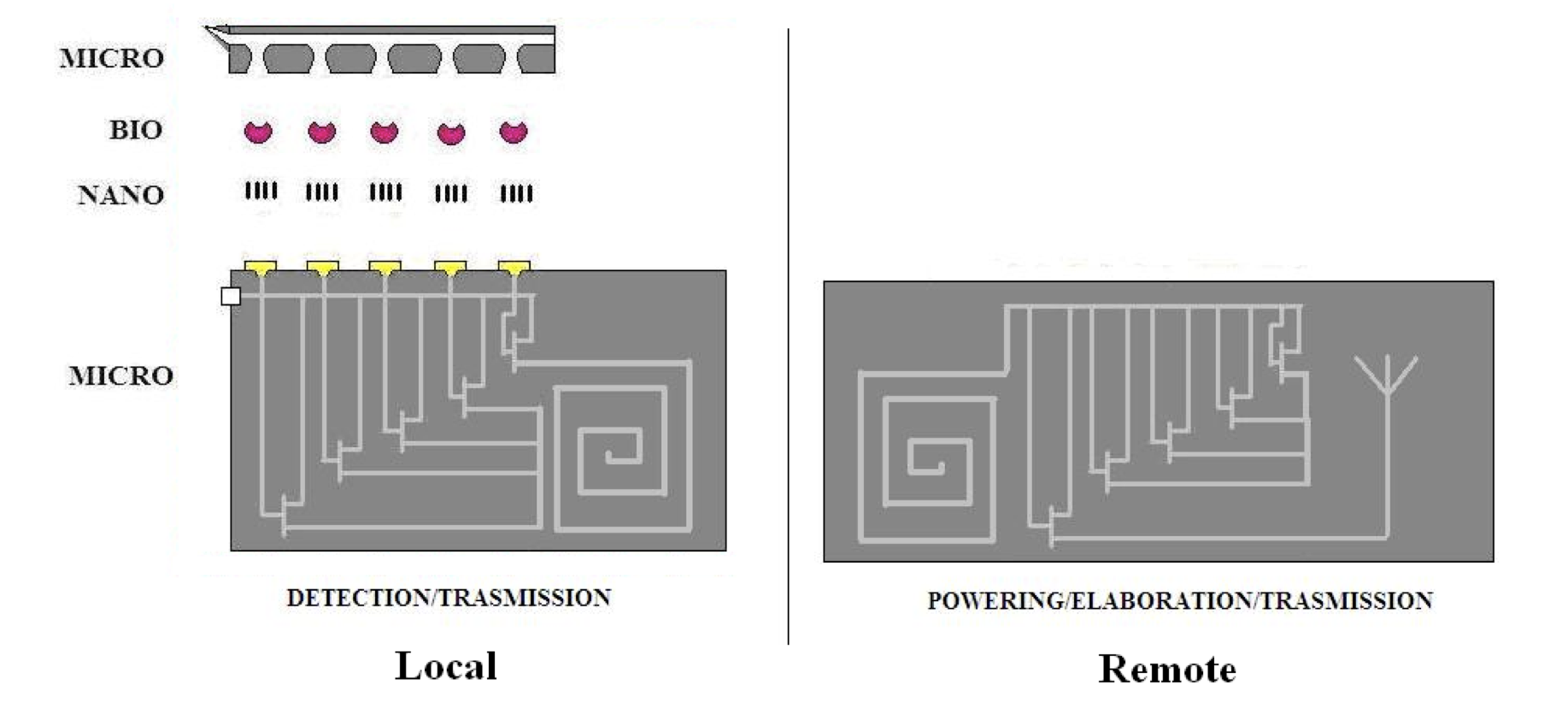
Enabling technologies required to address nano-systems for bio-sensing
The fluidic-interface
Starting from the biological system that hosts the nanosystem, the first encountered interface is that of the fluidics. In general, the nanosystem cannot be bio-compatible and therefore, a proper fluidics system is required for interfacing between the cells. This fluidic interface has to be biocompatible in order to plant the nanosystem in a biological environment. At the same time, the fluidic interface needs to be a communication channel in order to transfer the biological information from the cells to the nanosystem. Here, material science provides a special design based on biocompatible materials (e.g. polydimethylsiloxane, also called PDMS) that are used to obtain micro-sized fluidic channels from the cells to the nanosystem.
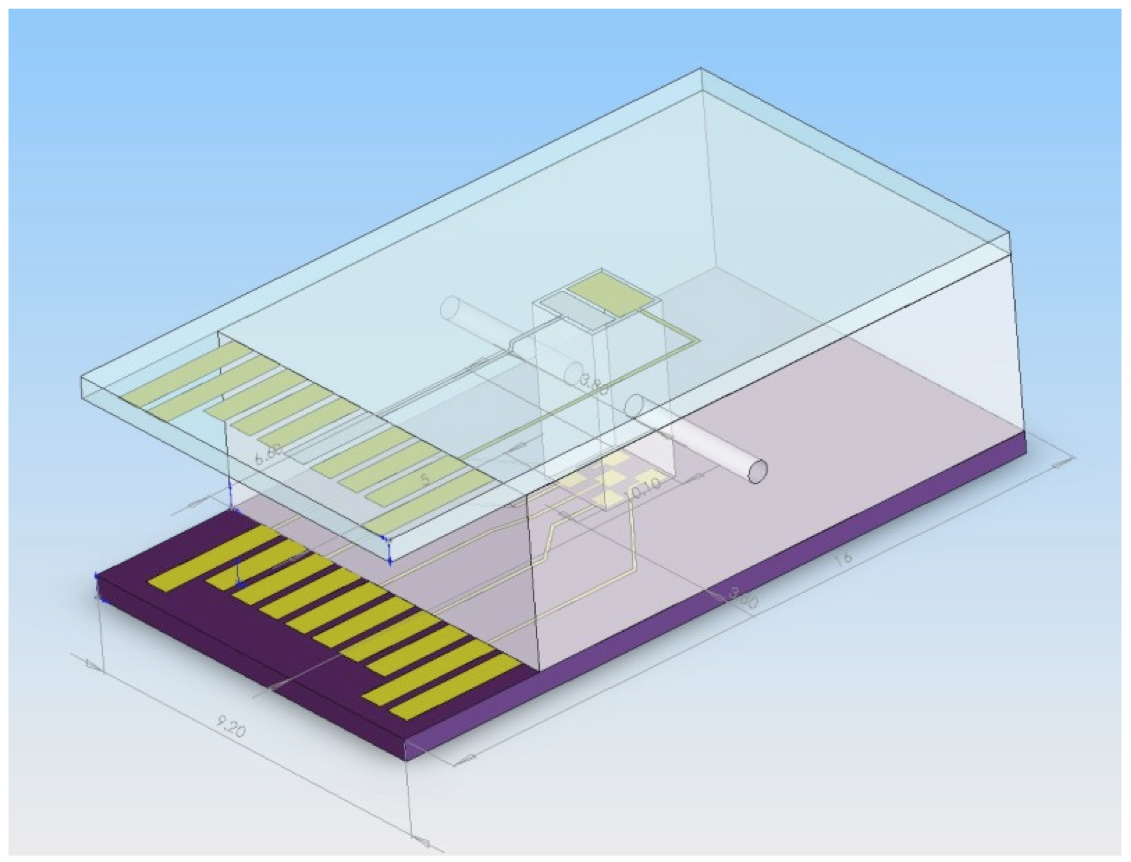
Micro-fluids design providing the interface towards the bio-systems
The Bio-interface
In order to realize the bio-reactive nano-systems, various sensing approaches were explored for bio-layer design, including oxidase and cytochrome proteins. Each specific protein was used to address a specific bio-marker. Bio-markers may be endogenous molecules (typically, markers of the bio-system status) or exogenous molecules (typically, information related to the bio-actuation on the biological system). In both cases, the probe-proteins were queried with proper electrical signals (see below) in order to translate the bio-information into proper electrical signals.
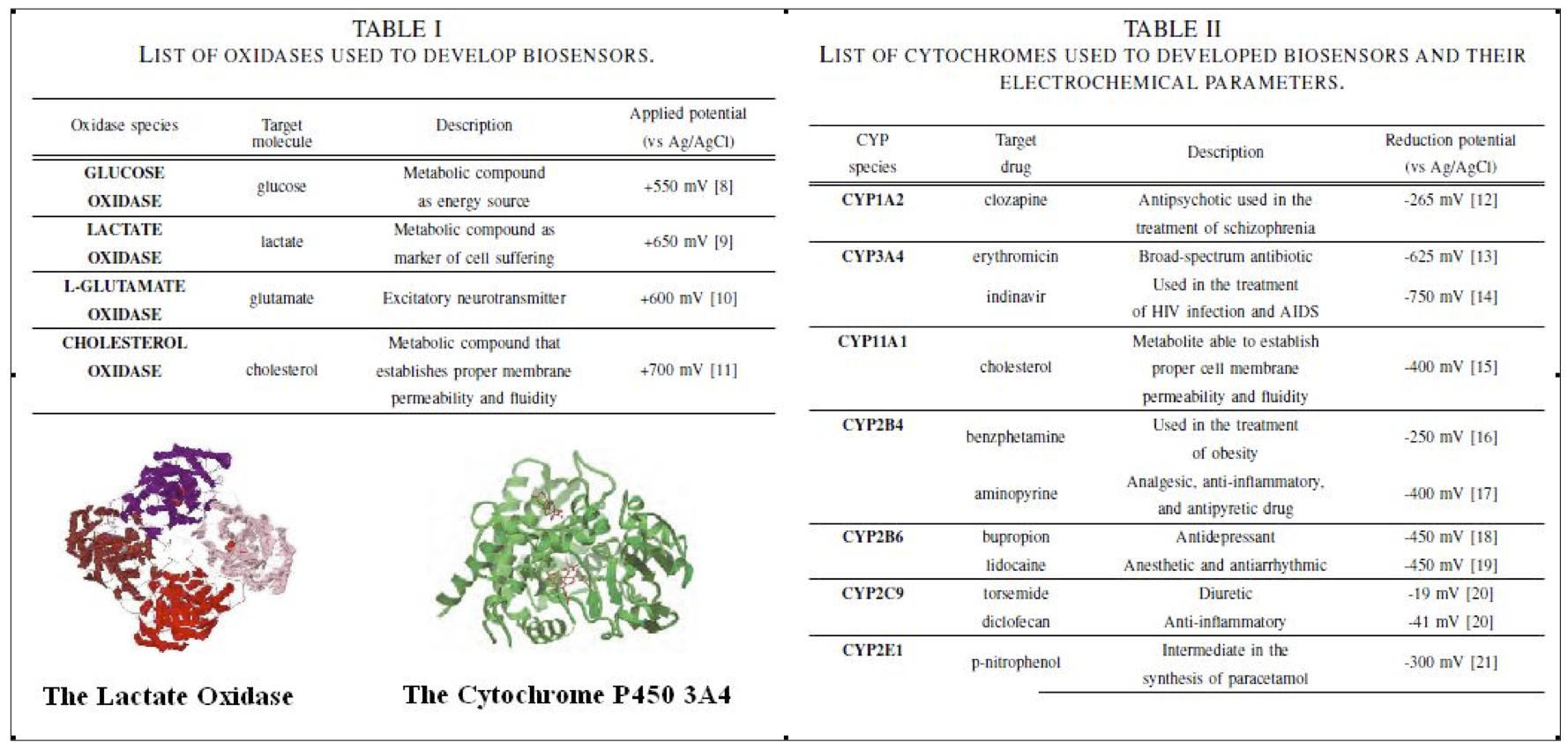
The bio-probes providing specificity to the nanosystem
The Nano-interface
Occasionally the electrical signals collected onto the electrodes as transduction of the biological information were not strong enough to be acquired in a reliable and robust manner. The situation was improved by using proper nano-structures to enhance the electrical signals at the interface. In particular, carbon nanotubes were investigated because of their remarkable electrical and electrochemical properties and were used to improve the coupling between the CMOS front-end and the biological probes.
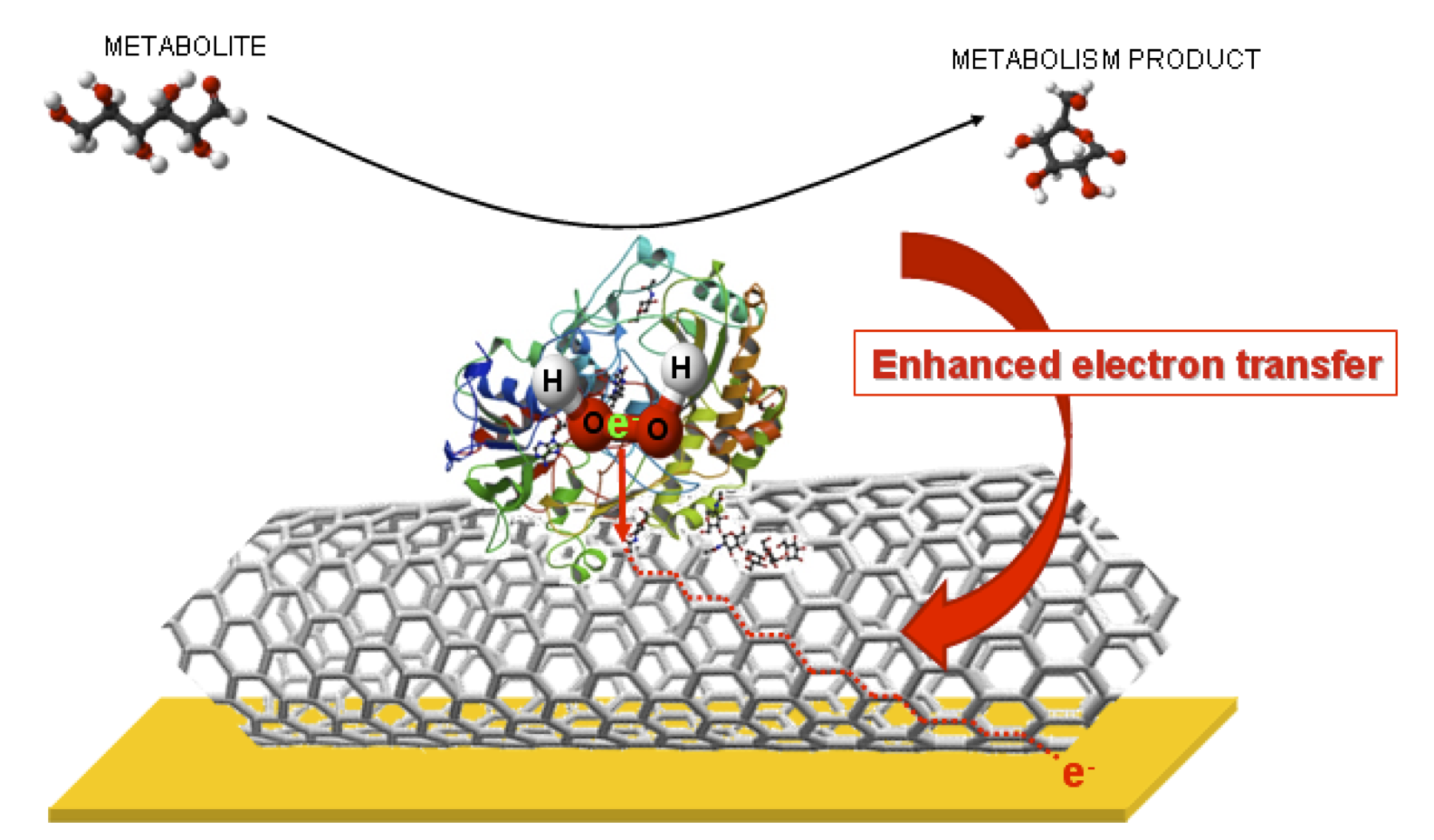
Carbon nanotubes providing enhanced sensitivity
The CMOS-interface
Enabling technologies were also investigated on the CMOS front-end. The goal was to discover proper front-end blocks that can address interface requirements between the nanosystem and biosensing end, taking into account all the differences of the various bio-probes and their changing properties due to their nano-material exposure.
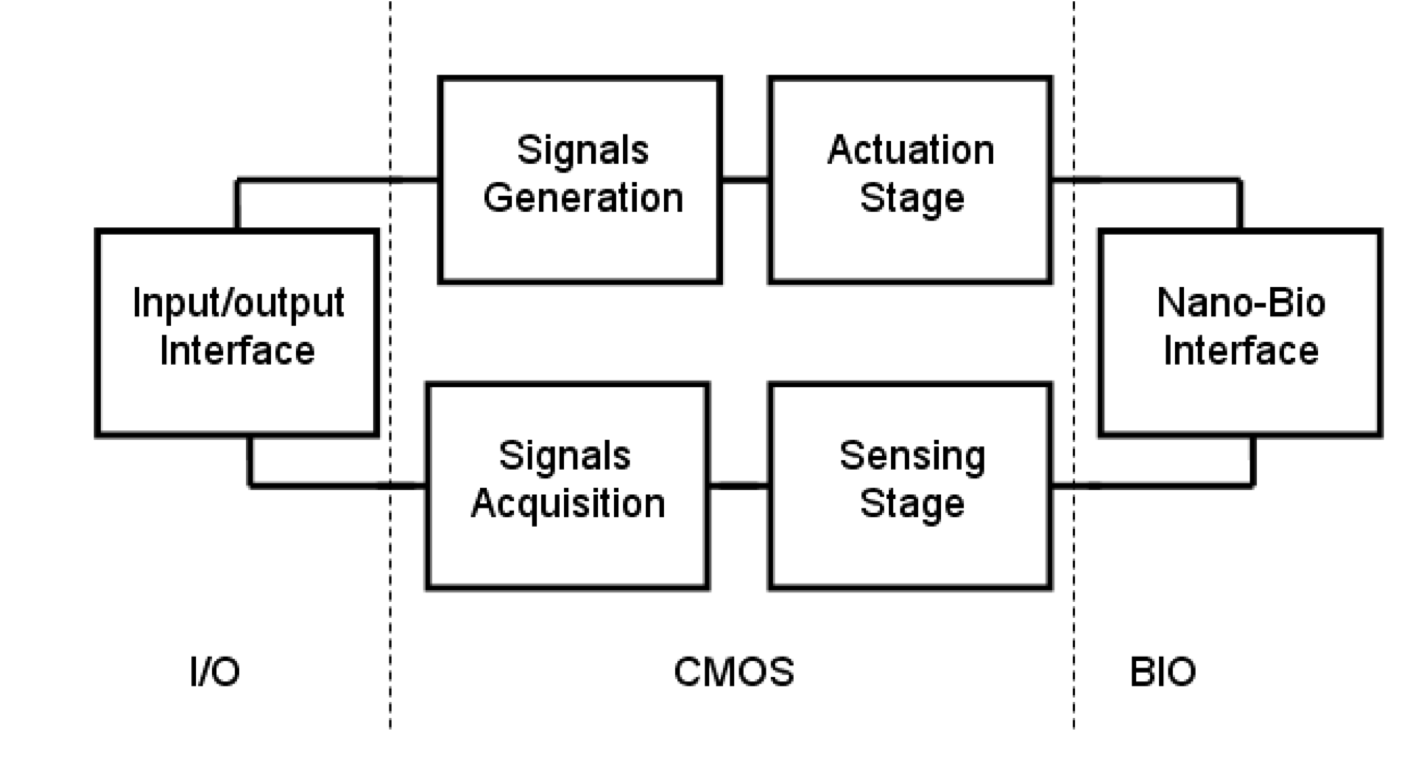
Blocks diagram for the micro interface forming the CMOS front-end
To read more about the integration between the CMOS front-end and the nano-bio interface, please have a look at the book entitled Bio/CMOS Interfaces and Co-Design.
The Remote-interface
Another aspect of designing interfaces between nano-systems and life systems is using multi-path communication structures supporting both transfer of data in presence of failing links and power transmission. Within this context, inductive links were investigated towards the possibility to transmit enough power (in the range of mW) through skin barriers of centimeters in size, while assuring large data transmission (up to 100 Kb per second) in terms of channel capacity.

Implanted nanosystems require interfaces toward remote monitoring systems
Of course, nanosystems combined with biosystems allows the creation of extremely integrated and innovative devices to address continuous monitoring of human metabolism (for medicare), animal models (for translational medicine) and in cell cultures (for biotechnology). Further details on each single project can be found at this link.